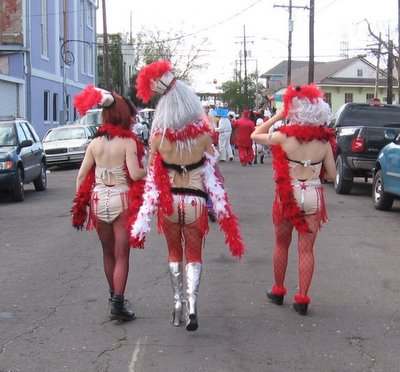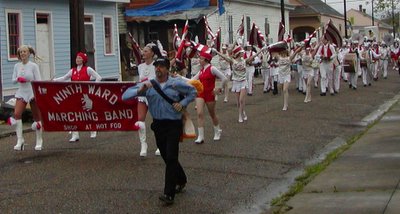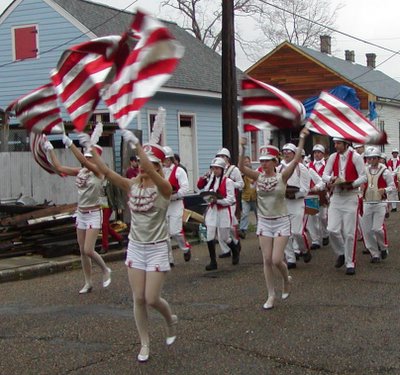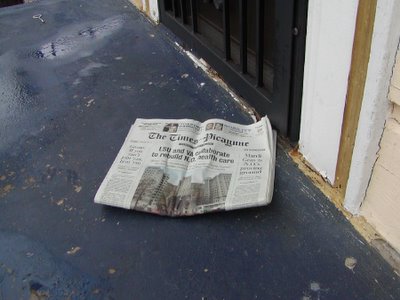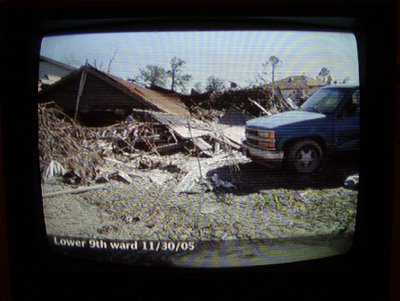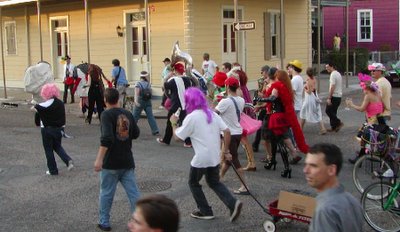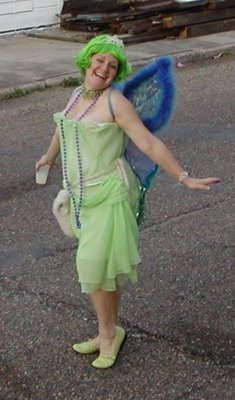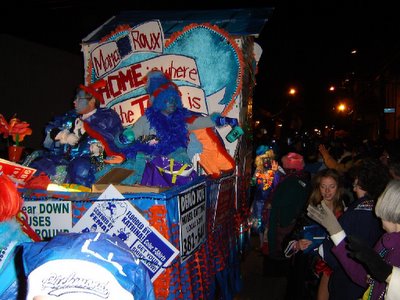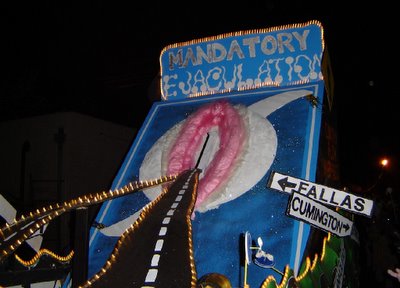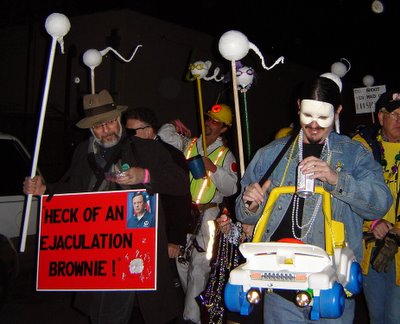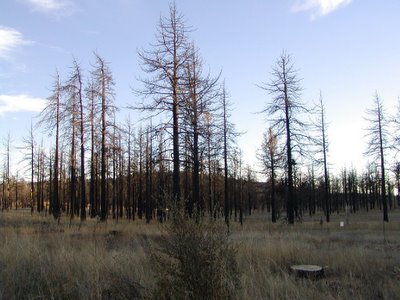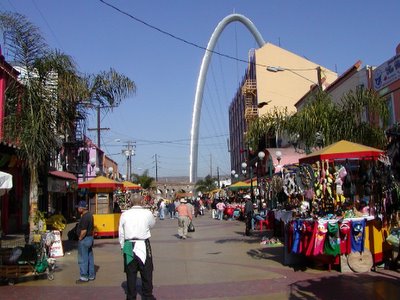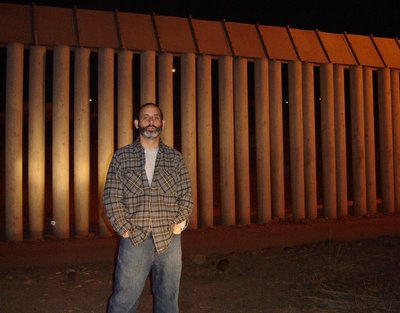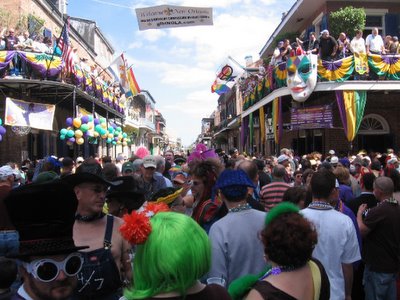 The crowds were smaller and more local than normal for New Orleans' 150th Mardi Gras celebration (even at the corner of Bourbon and St. Ann streets, shown above, site of the Bourbon Street Awards costume contest), but the weather was spectacular and the atmosphere was exuberant for this first Fat Tuesday since Katrina wrecked the city.
The crowds were smaller and more local than normal for New Orleans' 150th Mardi Gras celebration (even at the corner of Bourbon and St. Ann streets, shown above, site of the Bourbon Street Awards costume contest), but the weather was spectacular and the atmosphere was exuberant for this first Fat Tuesday since Katrina wrecked the city.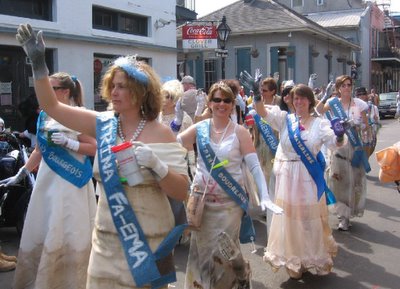 Katrina "debris-taunts" promenaded down Bourbon Street past the Clover Grill and Cafe Lafitte in Exile, one of the oldest gay bars in the city. Normally, this corner would be filled with guys and virtually impassable.
Katrina "debris-taunts" promenaded down Bourbon Street past the Clover Grill and Cafe Lafitte in Exile, one of the oldest gay bars in the city. Normally, this corner would be filled with guys and virtually impassable.Another difference - none of the gay bars erected the wooden supports normally needed to strengthen overstuffed balconies. No such problems this year.
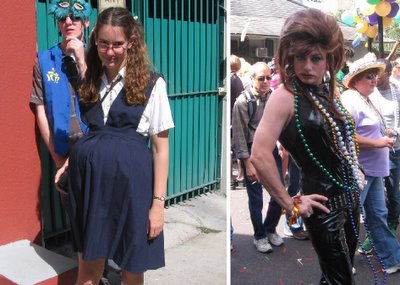
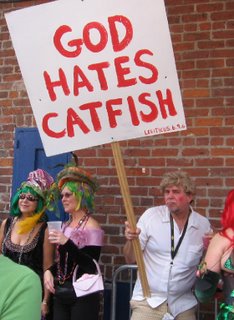 A not-so-innocent Catholic school "girl" (above left) was showing her stuff on Royal Street. Strangely, she claimed to study at Jesuit High School, a local boy's institution. Hmmmmmmm. On Boubon Street a drag queen (above right) modeled her mourning attire.
A not-so-innocent Catholic school "girl" (above left) was showing her stuff on Royal Street. Strangely, she claimed to study at Jesuit High School, a local boy's institution. Hmmmmmmm. On Boubon Street a drag queen (above right) modeled her mourning attire.Even evangelical Christians - or at least the ones who disapprove of seafood - were in town.
Actually, there was little for the real Bible thumpers to thump against. I saw only one woman baring more than her soul, and not once did I see a guy open his fly outside of a bathroom. Nearly everyone was wearing enough clothes to get seated at a decent restaurant.
The day lacked the overt debauchery of past Mardi Gras celebrations, at least in the areas where we walked.
As was expected, many costumes depicted hurricane themes that mainly poked fun at government agencies and officials. Blue roof tarp was the fabric of choice for many.
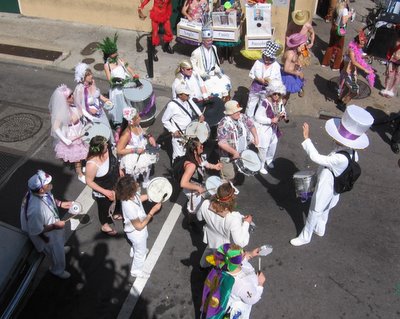 We ended our day on the second-floor balcony of a friend's house on Royal Street where a Brazilian-styled drum group provided entertainment on the street below.
We ended our day on the second-floor balcony of a friend's house on Royal Street where a Brazilian-styled drum group provided entertainment on the street below.